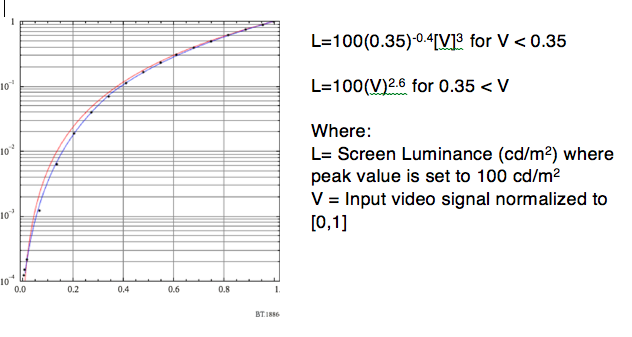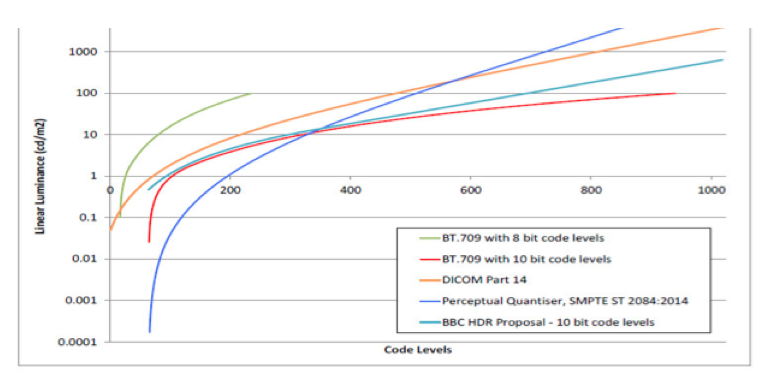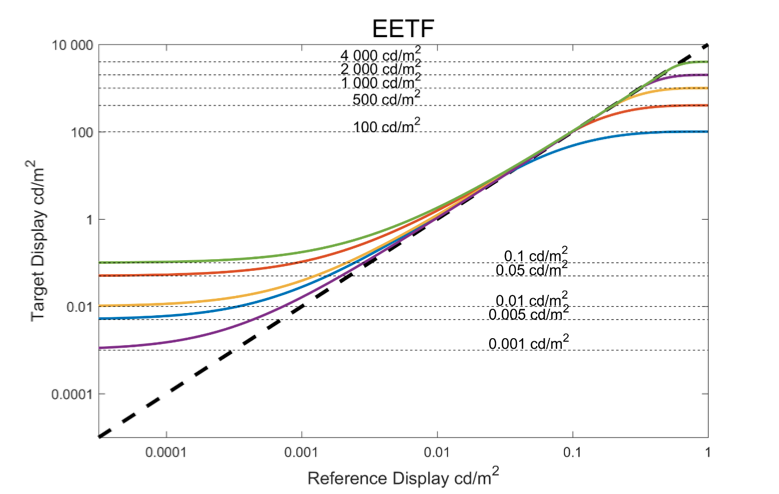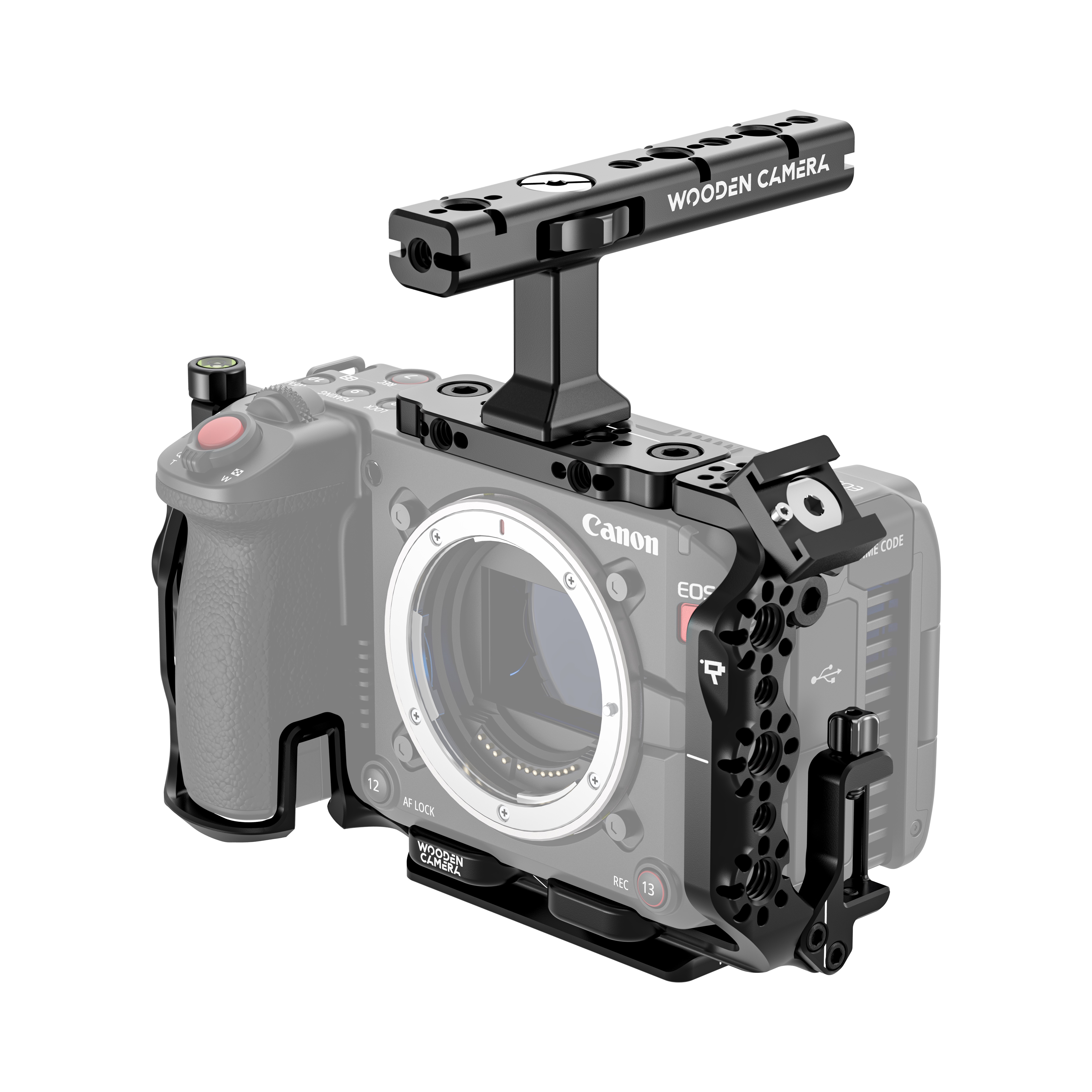Brightest Brights, Darkest Shadows…. HDR

LOS ANGELES—This month, I thought we’d tackle one of the less controversial subjects in the media business today, high dynamic range. Who could argue from a creative perspective or from the viewer’s perspective, the ability to capture and delivery stunning video imagery with a dynamic range far in excess of the current HDTV system.
Sorry, the world is never that simple. While there is agreement that HDR is one of the key components that should be included in UHD TV, the details of what HDR consists of, what the specifications will be or which encoding and compression methods will be standardized, has not been settled. In an attempt to help frame this situation, I’ll start at the beginning….
CRT and GAMMA
In the beginning of television, the one and only display technology was the cathode ray tube. An incredible technology for its time, it did have certain limits, one of which was the peak brightness possible, limited by the maximum spot size (resolution) as well as the power supply. CRTs have a characteristic electronic to optical transfer function (EOTC) implicit in the physics of the CRT, which we know as gamma(γ). The gamma transfer curve has been documented officially in ITU Rec. BT 1886:

The dynamic range of this curve is typically from 0.1 cd/m2 to 100 cd/m2 , which can represent three orders of magnitude or about 10 f-stops. Those of us who have had to shade cameras know that there are limits to where to set iris (exposure), pedestal (minimum black) and the knee point (peak white). Beyond the limits of minimum black and peak white, the video signal clips and all detail is lost.
The CRT limitations constrained the design of the original analog TV systems (NTSC, PAL and SECAM) as well as early digital video systems (ITU Rec. BT 601) and HDTV systems (ITU Rec. BT 709). These systems implicitly limited the range of display luminance values to match the CRT capabilities and using the inverse gamma (0.45) to convert the linear light values from the electronic sensor (CCD/CMOS or tube) to electronic values (voltage or digital code numbers).
With the development of flat panel technologies (LCD, plasma, OLED) along with improvements in display brightness including LED backlighting, display performance is no longer a limitation to reproduce the brightest scene elements while still handling the dark shadow details providing a dramatic increase in overall picture contrast ratio.
HDR
High dynamic range tonal reproduction goes beyond the brightness of standard dynamic range, both in the toe (minimum black) and shoulder (peak white/highlights). SMPTE has standardized a new transfer curve defining the conversation to/from linear light values and video levels (code values) in ST 2084. Known as PQ (perceptual quantizer), this curve is based on the perceptual quality of the human visual system and was defined so as to minimize detectable errors (banding and contouring) over a large range of light values from .0005 cd/m2 to 10,000 cd/m2.This range covers most of the range of human vision as well as natural scene lighting and represents eight orders of magnitude or 28 f-stops! PQ preserves this extreme range of light values while fitting them within of the 10- or 12-bit values of digital video. Below is a comparison of different electrical-to-optical transfer function (EOTF) curves:

However PQ is not strictly a display transfer curve. For each display, there has to be a conversion from the PQ values back to linear light and then another conversion from linear light to display light values. This is sometimes referred to the electronic-to-electronic transfer function (EETF).

There are two meta-data items that are needed by the display to correctly convert the PQ values to display light values, MaxCLL (peak white) and MaxFALL (frame averaged light level). These two metadata items anchor the scene tonal range so that the mid-tones are reproduced correctly and the overall scene light balance is maintained.
So far so good.But what about displays fixed to the old gamma curve? And will a program produced for HDR look right if converted to the more limited CRT display tonal range?
The BBC and NHK have proposed a compromise curve between PQ and gamma, which uses the lower part of the gamma curve and then mapped to a logarithmic curve to extend the upper range of peak white. Called HLG (hybrid log gamma), the definition of the curve can be found in the ARIB B67 standard, “Essential Parameter Values for Extended Image Dynamic Range Television.” While Rec. 709 is anchored in a definition of the peak white value (100 nits) and PQ is a mapping of absolute light values, HLG defines the code value of 0.5 to represent a reference white level (relative to the SDR code value of 1 = 100 nits). Typically the range of HLG encoding is from .001 nits to 1000 nits for a dynamic range of 20 f-stops.
Similar to Rec. BT 709 (SDR), HLG is a “relative light” transfer curve, so the display device tonal range characteristic has to be known at the time of mastering. While this works for a HDR display, what about SDR displays?How will HLG look on these legacy (and some of the first generation 4k displays)? Tests by the BBC and NHK report that HLG, when displayed on a SDR monitor, produce reasonable results. Can HLG might be a good candidate-mastering curve for live television production as a common format for both HDR and SDR?We’ll see….
So far, we’ve gone over the concepts in terms of capture and display of HDR, but what about delivery? How can HDR programs be delivered to the viewer?s it possible to simultaneously deliver a signal that can be faithfully reproduced on any display, HDR or SDR? What about all the different types of content distribution such as Blu Ray, OTT, VOD, cable, satellite and of course over the air?I’ll address HDR distribution and delivery in my next article. Stay tuned.
The professional video industry's #1 source for news, trends and product and tech information. Sign up below.

im DeFilippis is CEO of TMS Consulting, Inc. in Los Angeles, and former EVP Digital Television Technologies and Standards for FOX.
